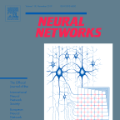We focus on ocular biometrics, specifically the periocular region (the area around the eye), which offers high discrimination and minimal acquisition constraints. We evaluate three Convolutional Neural Network architectures of varying depth and complexity to assess their effectiveness for periocular recognition. The networks are trained on 1,907,572 ocular crops extracted from the large-scale VGGFace2 database. This significantly contrasts with existing works, which typically rely on small-scale periocular datasets for training having only a few thousand images. Experiments are conducted with ocular images from VGGFace2-Pose, a subset of VGGFace2 containing in-the-wild face images, and the UFPR-Periocular database, which consists of selfies captured via mobile devices with user guidance on the screen. Due to the uncontrolled conditions of VGGFace2, the Equal Error Rates (EERs) obtained with ocular crops range from 9-15%, noticeably higher than the 3-6% EERs achieved using full-face images. In contrast, UFPR-Periocular yields significantly better performance (EERs of 1-2%), thanks to higher image quality and more consistent acquisition protocols. To the best of our knowledge, these are the lowest reported EERs on the UFPR dataset to date.
翻译:暂无翻译




